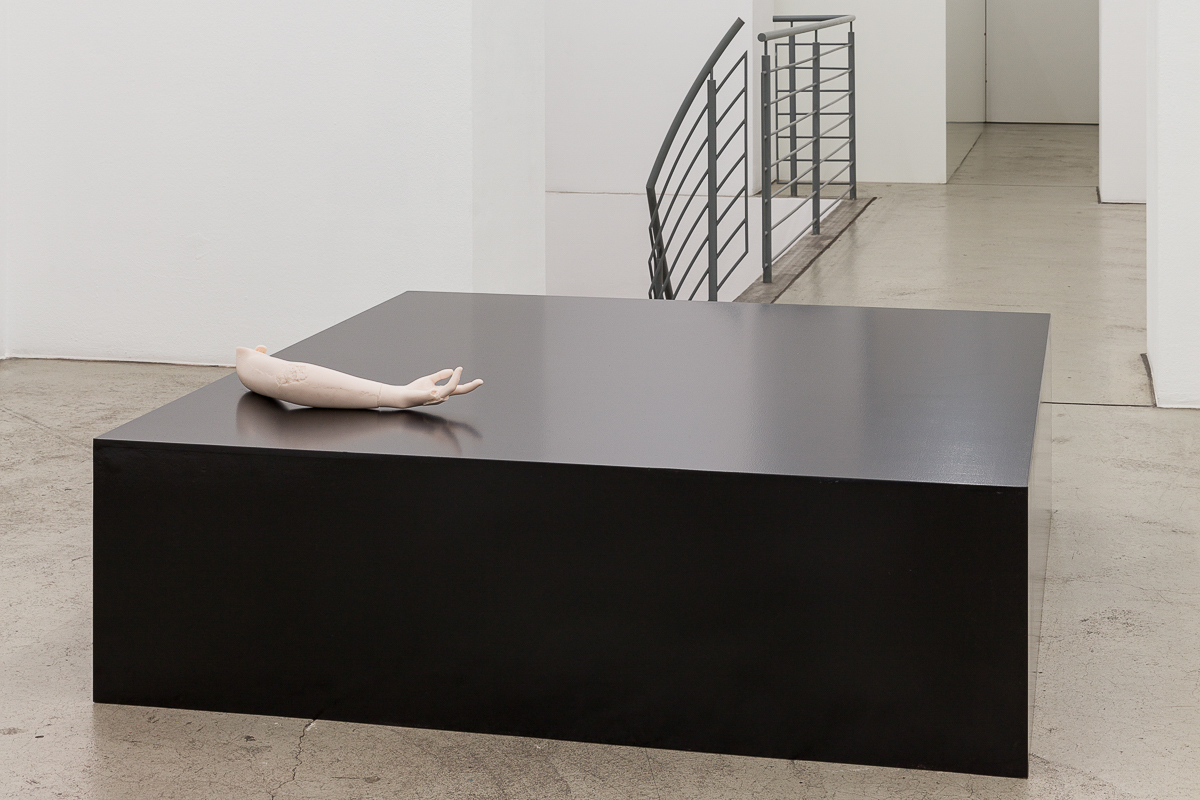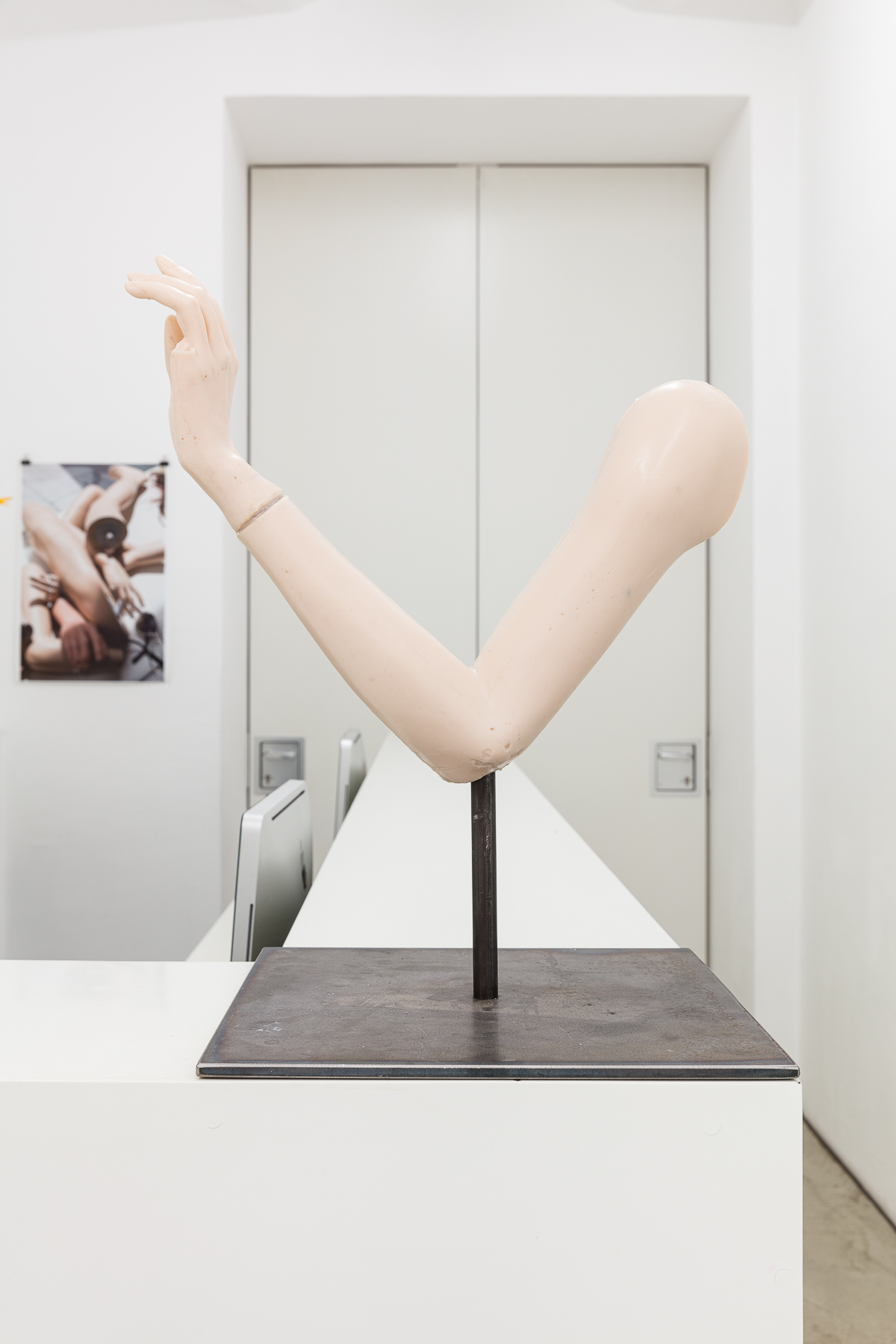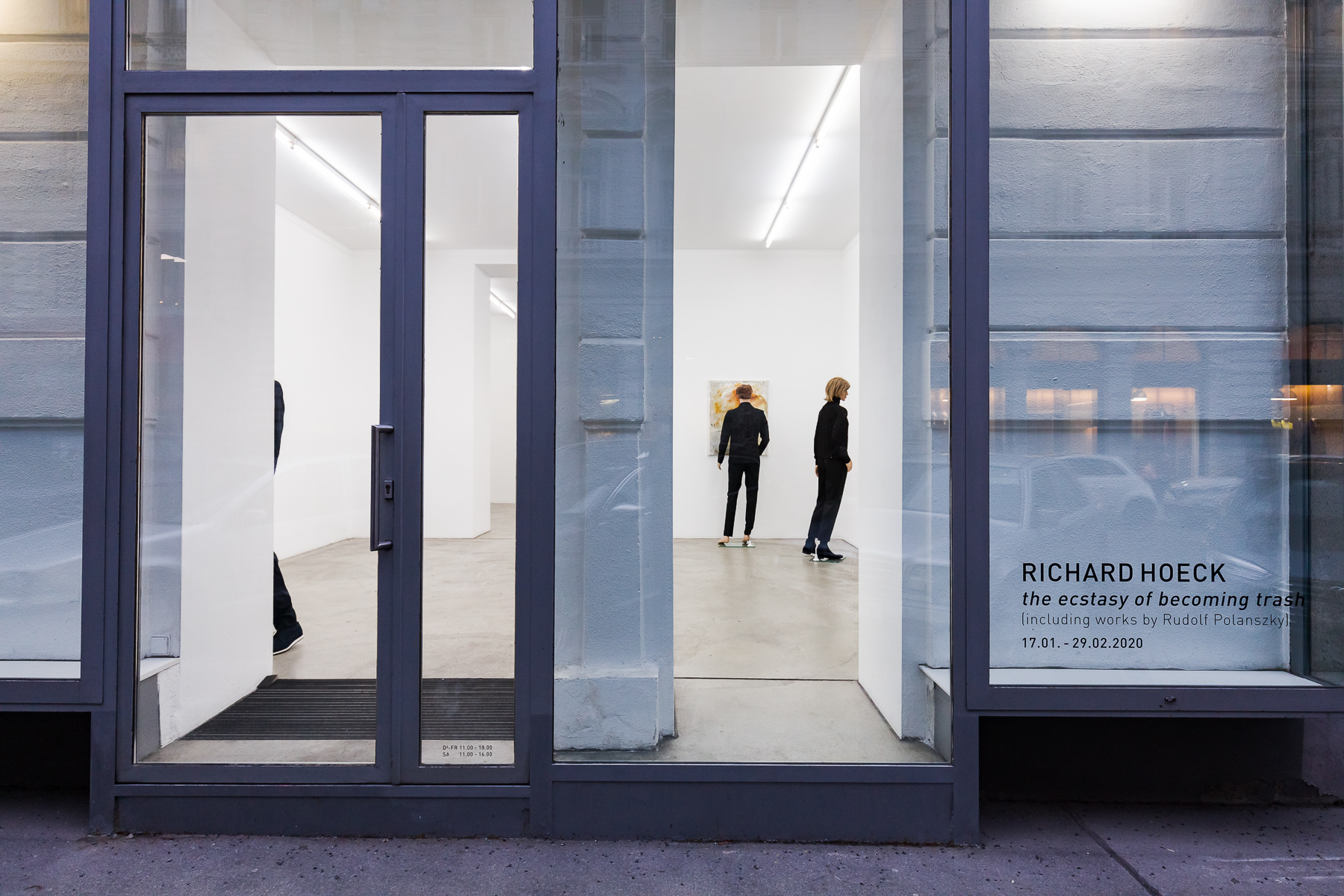the ecstasy of becoming trash (including works by Rudolf Polanszky) – 17/01/2020 – 29/02/2020
exhibition at Gabriele Senn Galerie, Vienna
Mannequins block the view of abstract paintings. Made from industrial trash, the canvases have the same dimensions as Der Wanderer über dem Nebelmeer (1818) by Caspar David Friedrich. Until the Romantic era, the Rückenfigur—a figure seen from behind—generally had a narrative or compositional function in painting. In the second half of the 19th century, the Rückenfigur became autonomous. These creeps have some personality. More realistic mannequins are found in discount clothing stores. In high-end fashion boutiques they’re usually more abstract: single torso, headless, etc. In 2009, Richard Hoeck (in collaboration with John Miller) made a mannequin child for Cave Painting, curated by Bob Nickas. It was the only figurative element in an otherwise abstract exhibition. Hoeck and Miller also collaborated on Mannequin Death (2015), a high defi- nition video of a family of gussied up mannequins pushed into a quarry. It’s an abstract thought for a mannequin to die. Stiff plastic people snap and smack upon contact with rock. It’s as melodramatic as it is brutal. Imagine Caspar David Friedrich’s dreamy wanderer tossed over the rocky precipice and into the sea of fog. Oil paint cracks. Romanticism was in part a reaction to early Industrialism. Are the consequences of the 20th century—all of it, the good, the bad—nothing but the tipping over of 19th century idealism? What does that mean in 2020? Rodin cast truncated torsos in bronze, establishing the potential of the fragmentary body for modern art. Hoeck cast some of his mannequin’s broken limbs in silicon, displaying them on a black pedestal. Disjecta membra—scattered parts—from Horace’s Satires, refers to the “limbs of a dismembered poet,” im- plying that even if poetry is torn apart and rearranged, the poet is still recognizable. These limbs are recognizably Hoeck.
Throwaway thoughts on “the ecstasy of becoming trash” by Tenzing Barshee & Camila McHugh
LIST OF WORKS:

Debris #1
Richard Hoeck
2020
wood, gloss paint and silicone, dimensions: 150x150x50 cm (rostrum) 51x16x8 cm (arm)
Foto: © Kunstdokumentation

Untitled (including work of Rudolf Polanszky)
Richard Hoeck
2020
mixed media, 180 cm, unique piece
Foto: © Kunstdokumentation

Debris #2
Richard Hoeck
2020
silicone, iron, dimensions: 35x35x52 cm
Foto: © Kunstdokumentation



